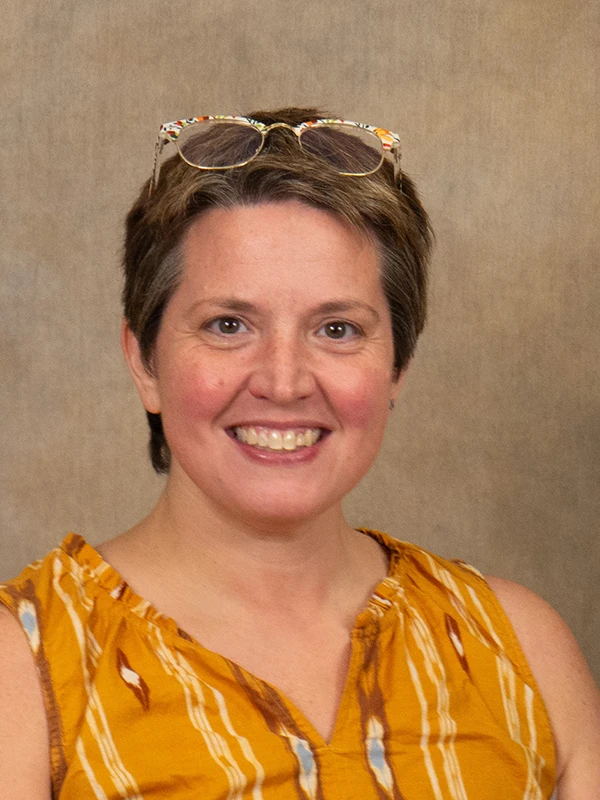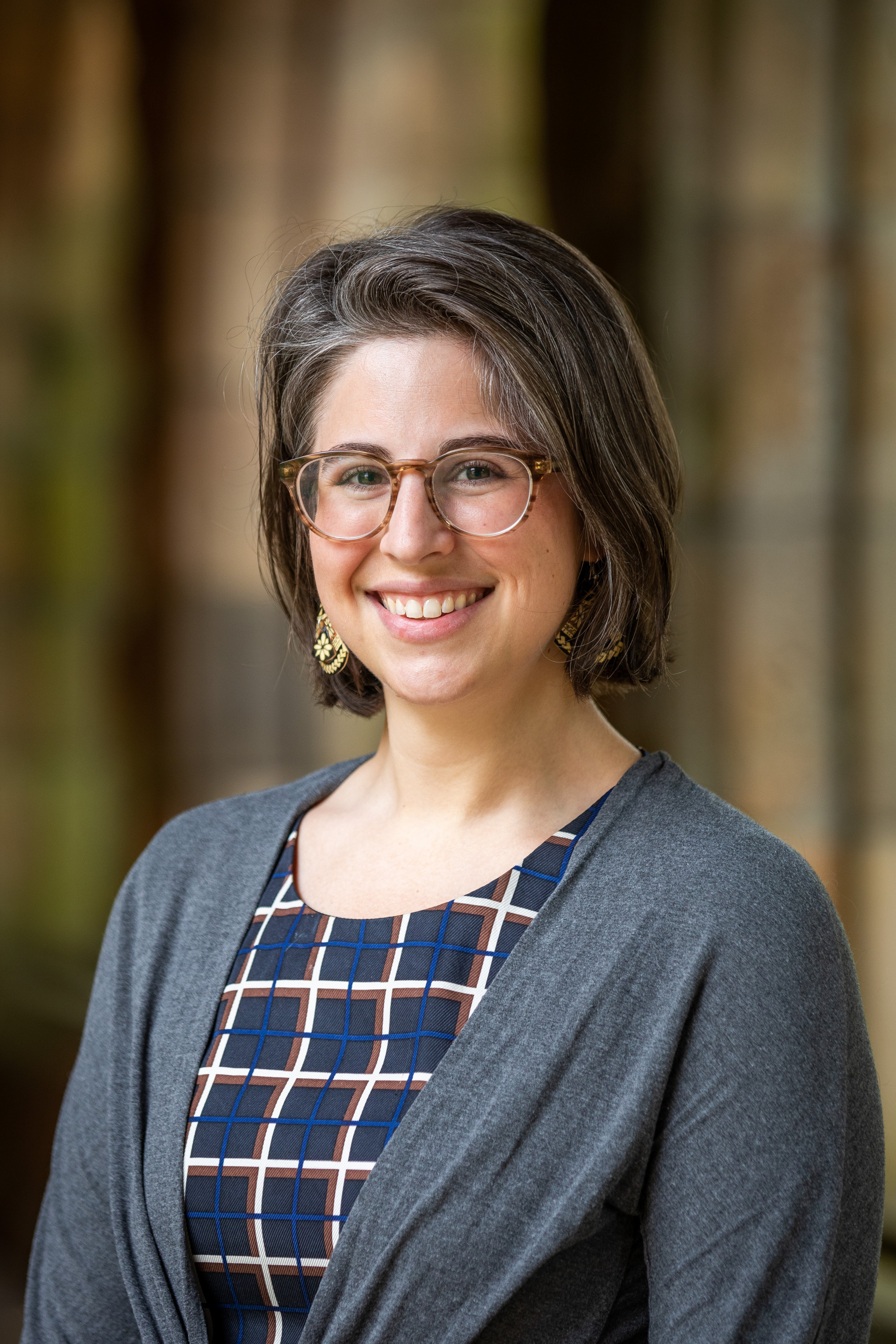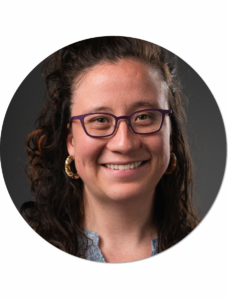- MAA-SE
- 2025 Meeting
- Invited Speakers
104th Annual MAA-SE Sectional Meeting
Invited Speakers
Distinguished Lectures for Students

Dan Yasaki, University of North Carolina, Greensboro
Fun with Fractions
The study of continued fractions goes back to Indian mathematicians in the 6th century. They came back into fashion in Europe in the 1600’s and were studied extensively in 18th and 19th centuries. They find their way into modern mathematics through their use in computing modular forms and computer recognition of rational numbers. In this talk, I will introduce continued fractions and discuss some of their modern applications.
Bio: Dan Yasaki is a professor in the Department of Mathematics and Statistics at UNC Greensboro. He earned his PhD from Duke University in 2005. After a three-year post-doc at UMass Amherst, he joined the faculty at UNCG in 2008. Yasaki’s research interests are in the area of modular forms, particularly the connection between explicit reduction theory of quadratic forms and the computation of Hecke data for automorphic forms. Recent work has been focused techniques for computing new examples of modular forms over number fields of small degree. In his spare time, he volunteers at the Guilford County Animal Shelter and is a founding member of the non-profit Friends of Guilford County Animal Shelter.

Mike Pinter, Belmont University
Hats, Hamming and Hypercubes
During this interactive session, we will begin with a team strategy game followed by an error-correcting code with a corresponding link to hypercubes. Participants will explore how the game, code and cubes are connected to each other through examples and questions that arise. Come engage yourself with some contemporary mathematical topics that will be accessible regardless of the mathematics courses you have taken.
Bio: Mike Pinter, Professor of Mathematics at Belmont University, also serves as Director of Belmont University’s Teaching Center. His favorite courses to teach include Discrete Mathematics, Combinatorics, and the Mathematical Inquiry Seminar for students in Belmont’s Honors Program. Mike’s current scholarship focuses on the scholarship of teaching and learning, including regularly offering presentations about teaching and learning at mathematics meetings and at teaching and learning conferences. His hobbies include reading (especially fiction), gardening, and cheering on his favorite sports teams, the Tennessee Titans and Belmont Bruins. Mike’s wife Robbie Pinter is Professor of English Emeritus at Belmont and their son Nicholas, a graduate of the Next Steps Program at Vanderbilt University, teaches in an Early Childhood Learning program. Mike and his family enjoy family time with their dog Maisy.
Plenary Speakers

Jeneva Clark, University of Tennessee, Knoxville, MAA-SE Section Lecturer
Skibidi, Jabberwocky, and Grationality
“When I use a word, it means just what I choose it to mean — neither more nor less.” - Humpty Dumpty
Creating new words can clarify mathematical communication and logic, especially when forging new pathways. In this session, a few new words will help us approximate rationality in a purely geometric context. These proofs will not use high-powered tools, so leave your slithy toves at home. Instead, we will rely on geometric constructions, proportional reasoning, tiling, dissection, and proof by descent.
We will determine whether 3, 4, 5, 6, and 9 are “grational,”as defined below. We will use the stealth of geometry to sneak up on number theory, such as proving all perfect squares are grational.
Define a nice-gon to be a regular polygon with integer side lengths in Euclidean geometry. A nice n-gon is a nice-gon with n sides. An integer n is grational if and only if there exists a nice n-gon such that its area equals the sum of areas of n congruent nice n-gons.
Open questions about grationality will follow you home and may inspire your next mathventure. What would grationality look like with higher values or with higher dimensions? How is grationality related to rationality? Might grationality be related to the work of Hippasus of Metapontum, described by Plato?
Bio: At the University of Tennessee, in Knoxville, Jeneva Clark teaches Geometry, History of Mathematics, and Mathematical Reasoning and has mentored many math graduate students in teaching. She loves designing fun and engaging lessons, teaching undergraduate mathematics, advising future teachers, mentoring future faculty, and implementing professional development for other instructors. Clark has been involved in 14 funded grants, serving as principal investigator on nine. Her past research focused on how students learn from errors. Recent research she directed examined the differences in how US faculty and graduate students from America and Ghana judge the elegance of given proofs. She’s hoping to delve into further cross-cultural educational studies with co-researchers in Ghana and other countries. Clark, who received the 2023 MAA-SE Section Distinguished Teaching Award, used her plenary talk at the 2024 MAA-SE annual meeting to honor the late Bill Brodie. He was one of four members turned away from the MAA section meeting conference hotel in 1960 because of their race. During the 2024 MAA-SE conference at UT Knoxville, Mr. Brodie received a formal apology from the Southeastern Section of the MAA.

Hwayeon Ryu, Elon University, 2024 Distinguished Beginning Teaching Award Winner
How to Not Only Survive but Also Thrive as an Outlier
Navigating academia as an outlier—whether due to background, research interests, teaching philosophy, or identity—can be both challenging and rewarding. In this talk, I will share the challenges I have faced, as well as insights from my unique journey, reflecting on the strategies that helped me not only persist but also thrive in environments where I did not always fit the mold. Drawing from experiences in teaching, research, and mentoring, I will discuss the power of authenticity, resilience, and community-building in shaping my identity as a mathematician. Whether you find yourself feeling like an outlier or simply want to support those who do, this talk will provide practical takeaways for overcoming obstacles, embracing unique perspectives, and fostering a supportive community that values diversity and inclusion. Join me as we explore how the challenges of being an outlier can become a powerful catalyst for growth and success.
Bio: Hwayeon Ryu is an Associate Professor of Mathematics at Elon University. She earned her B.S. in Mathematics from Korea University in South Korea in 2008 and her M.A. and Ph.D. in Mathematics from Duke University in 2011 and 2014, respectively. Her research focuses on mathematical modeling and the analysis of dynamical systems, particularly in systems biology, neuroscience, and immunology. Her current work on modeling the immune response to SARS-CoV-2 is supported by the National Science Foundation.
Hwayeon is deeply passionate about bridging mathematics and biology through curriculum development and interdisciplinary research. She is also committed to increasing access to STEM education for women and historically underrepresented minorities. Over the years, she has mentored more than 30 undergraduate students on interdisciplinary projects in mathematical biology, with approximately 50% of her mentees being women or from underrepresented groups. She is currently serving as lead faculty for the Integrating Research in Science conference, a regional undergraduate STEM research event in collaboration with Wake Forest University.

Anne Duffee, Sewanee: The University of the South, 2024 Distinguished Teaching Award
Rigor Starts with Imperfection
In this talk, I explore the tension between mathematical rigor and perfectionism, particularly how the fear of failure can hinder their engagement with rigorous mathematical thinking. Drawing on Imre Lakatos’ book Proofs and Refutations, which describes a dialectical process of conjecture, proof, and refutation, I argue that just as historical developments in mathematics emerge through a cycle of failure and refinement, our students develop their own rigorous thinking through their experiences of failure. As a result, a large barrier to developing mathematical cognition stems from a rise in maladaptive perfectionism. I will discuss pedagogical strategies, including course structure and historically motivated problems, to help students navigate the discomfort of not knowing and cultivate genuine mathematical rigor.

Catherine Hsu, Swarthmore College, MAA AWM Speaker
Projective and Non-Abelian SET
Mathematicians love SET. On the surface, this classic game is a con test of pattern recognition, but it also presents an interesting way to visualize the geometry of a torus over a finite field. In this talk, we will discuss some of the mathematics connected to SET and then explore several new versions of the game, including one arising from projective geometry and one arising from non-abelian groups. In particular, we will see how these non-abelian variations on SET can give intuitive visualizations of abstract group structures.
Bio: Catherine Hsu is an Assistant Professor in the Department of Mathematics and Statistics at Swarthmore College. Her mathematical interests began as a penchant for logic puzzles and problem solving and grew into a love of abstract algebra and Galois theory while she was an undergraduate student at Rice University. Her research is now primarily in algebraic number theory, including projects related to modular forms and Apollonian circle packings. She also enjoys thinking about mathematical exposition, pedagogy, and unnecessarily complicated strategies for the card game Hanabi.
Prior to joining Swarthmore in the fall of 2020, Hsu was a Heilbronn Research Fellow at the University of Bristol as well as an AAUW American Dissertation Fellow and a Doctoral Research Fellow at the University of Oregon. As a junior researcher, she has greatly enjoyed traveling and speaking at conferences around the world and is looking forward to meeting new mathematicians as part of the MAA-AWM Lecturer program.